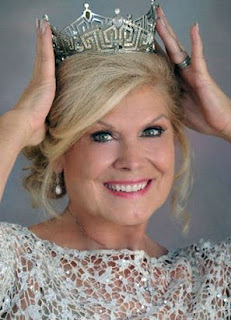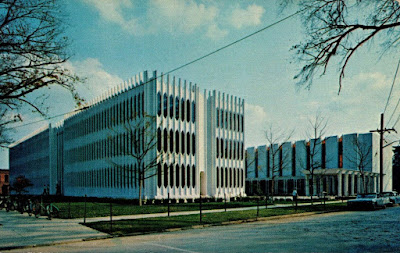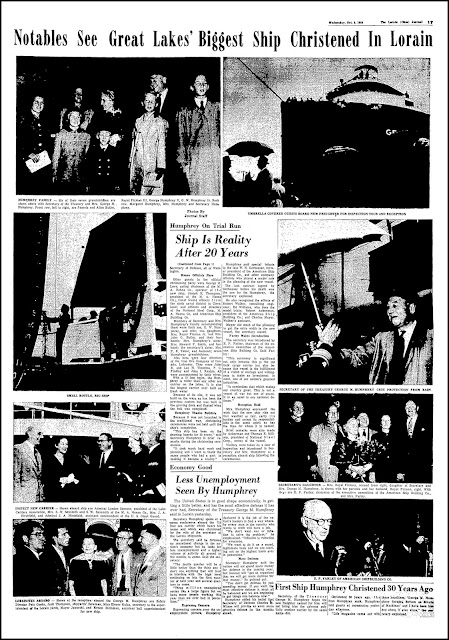 |
| Laurel Lea Schaefer, Miss Ohio 1971 and Miss America 1972 |
It's not every day that you open your email to find that a former Miss Ohio/Miss America has sent you a message. But that's what happened to me, and it was very pleasant indeed to hear from Miss America 1972, Laurel Lea Schaefer.
I had devoted
a post to Laurel that featured a few articles that were written about her when she was crowned Miss America in 1971.
Today she is known as Laurel Lea Schaefer-Bozoukoff, and she was gracious enough to reach out to me."Many thanks for recognizing my Ohio legacy," she wrote. "I remember those 50+ years ago as a unique journey of exquisite memories, empowering lessons learned, and personal dreams and goals realized. Over the years, the kindness, pride, and on-going support that I have received from fellow Buckeyes remains an integral part of my personal appreciation and gratitude for my many blessings.
"I am attaching the materials I submitted in 2021 to the Ohio Pageant in celebration of my Miss Ohio 50th Anniversary. The write-up details many of the blessings I speak of."
The biographical materials revealed that Laurel has had a pretty wonderful life.
Besides all of the great experiences that were part of being Miss America, (traveling the country and logging more than 250,000 air miles, meeting the President, throwing out the first ball of the World Series), Laura also had several impressive careers.
She enjoyed an entertainment career for more than 40 years, appearing on many TV shows including Three's Company, L.A. Law, Quantum Leap, The Rockford Files, Matlock, Love Boat and had a regular role on Falcon Crest. Her vocal talents as a lyric soprano led to many theatre credits and even more appearances on television.
Laurel's other careers include working for the Defense and Veterans Brain Injury Center (Dept. of Defense) at the Intrepid Spirit TBI Clinic, Camp Lejeune (N.C.). There, she educated service members on strategies for overcoming the effects of traumatic brain injury. As a Certified Brain Injury Specialist (CBIS), she continues her educational outreach on brain fitness and wellness, preparing interactive presentations for community organizations. Laurel has also owned her own company (specializing in children's commercials and animated films) where she served as casting director.
But getting back to her Miss America days.
Laurel was the last Miss America to headline a USO Tour to Southeast Asia. During her three weeks in Vietnam and Thailand, she kept a journal of her experiences and observations.
Is a book in the air?
"More recently, I have been working on a book, The Last Miss America in Vietnam and in the process of writing the book, I also composed a story for Vietnam Magazine," she wrote. "The story caught the eyes of the Vietnam Veterans of America and this past August I was awarded their "Presidents Award for supporting the troops.”
Laurel is philosophical about her being named Miss America.
"Once the crown is passed to the next recipient, life takes on new meanings, challenges and opportunities. For me, the legacy left is not so much about a title but, more importantly, the personal testimony that the title afforded. "To whom much is given, much is expected.”
 |
| Courtesy roadarch.com |
Laurel is from Bexley, Ohio, and I remembered from my days crisscrossing the Buckeye State with my camera that her hometown had a vintage Super Duper grocery store sign that was very popular with roadside enthusiasts. I mentioned to Laurel that I had taken a road trip to Bexley specifically to photograph it.
"Yes, I fondly remember the Elephant sign at Super Duper," she wrote. "Although the store was sold the sign remained, albeit, covered with a tarp. The elephant was there in 2015 but was gone by 2017. However, the Rubino’s Pizzeria sign and the restaurant are still there and operational in Bexley! Did you know that when I won Miss America the city installed signs at the entrance to Bexley saying, “Welcome to Bexley, Home of Laurel Lea Schaefer, Miss America 1972!” I asked Laurel if she knew Jacqueline Mayer, Miss America 1963 and the pride of Sandusky, Ohio. I've devoted
many blog posts to Jackie. It turns out they are good friends!
"Jackie and I stay in close contact," said Laurel. "When I celebrated my 50th Miss Ohio anniversary in Mansfield, Jackie attended. While making my remarks, I introduced her from the stage and said, “She’s MY Miss America." Jackie, and her mother, were instrumental when I was Miss Ohio and was preparing for the national competition. Jackie’s grace, eloquence, and elegance made a profound impact on me and she was my role model."
Laurel is very humble about her achievements. As her biographical materials noted, "With all her accolades, this woman of substance and humility takes no credit for her success but gives glory to Jesus Christ! Having lost her father to leukemia on her tenth birthday, Laurel learned early in life the value of time, obedience, and living in God's will."
I enjoyed my correspondence with Laurel and was happy to receive her gift of one of her archival Miss America postcards. "I only have a handful left but seeing you are all about nostalgia, it seemed fitting.
"Keep up the wonderful contributions that you are making with your own website!"
****
Here are some more photos of Laurel Lea Schaefer, from her Miss Ohio/Miss America days to today.
 |
| Circa 1979 |
 |
| Laurel and her husband, Michael |



















































